
There’s never a bad time to visit Japan’s former capital, but May is an especially good time.
Kyoto is one of the most popular travel destinations in Japan, and with good reason, The former capital of Japan is packed with beautiful, historically significant temples, shrines, and other cultural sites to see, and boasts some of the most refined hospitality and cuisine in the country.
The most popular months to visit Kyoto are April and November, when the cherry blossoms and fall colors, respectively, are at their most beautiful. Summer is another time when the city receives plenty of out-of-tow guests, many of whom stop by as part of their summer vacation or to witness the Gion Matsuri festival, while others hold that seeing Kyoto’s centuries-old architecture under a blanket of winter snow has its own mystique.
But Kyoto isn’t just a city for all seasons, but a city for all months, and right now, May, is a fantastic time to go. Why? Because…
1. It’s a rare chance to experience Kyoto in pleasant weather
Kyoto’s local geography is such that the city is essentially poured into a basin, with mountains rising at its outer edges. This creates especially extreme weather, even for a country where most regions are already swelteringly hot in the summer and piercingly cold in the winter.
But May is one of the few sweet spots in Kyoto’s weather patterns, with afternoon temperatures usually hovering around 20 degrees Celsius (68 degrees Fahrenheit).
While mild weather is always a plus when you’re sightseeing, it’s especially nice in Kyoto, with its wealth of temples, shrines, and gardens to stroll though and relax in. It’s a lot easier to soak up the atmosphere when you’re not wiping off sweat or shivering from the cold. Plus, by the time May rolls around, most of the pollen that causes Japan’s infamous spring hay fever is no longer swirling around in the air.
If you’re looking to take advantage of the weather by adding one more spot to you itinerary, a unique choice is Kawai Jinja, a shrine located on the grounds of yet another shrine, Shimagamo Jinja. Many shrines are said to convey a specific benefit upon those who visit, and in the case of Kawai Jinja the blessing is supposed to be increased beauty.
Because of this, Kawai Jinja’s ema, boards on which Shinto shrine visitors right the requests they make of the gods, are not the standard pentagonal shape. Instead, they look like a mirror, and visitors draw a (beautiful) face on the wooden surface.
2. The unforgettable experience of a kawadoko ryori meal
Kawadoko literally means “riverbed,” but for a kawadokoryori meal you won’t be sitting at the river’s bottom. You’ll be right above the water’s surface!
Kibune Fujiya, the restaurant pictured above, is one of a number of establishments that offer this elegant dining option. The exact fare varies from restaurant to restaurant, but most make use of ingredients and recipes indicative of Kyoto. When we visited, our meal started with a cup of green tea and confectionary, and included tempura shrimp and yuba (tofu skin), the latter being one of the must-eat foods on a Kyoto trip.
Everything tasted fantastic, but what really makes things special is how your other senses are stimulated at the same time, with the texture of the tatami reed floor mats, the sound of the flowing water, the cool breeze rising up from below, and the deep green leaves coming together to soothe even the most harried heart.
While kawadoko ryori is something you can do in the summer as well, May is an especially enjoyable time for it. In summer, the intense heat can have you wishing for the air-conditioned comfort of indoor seating, and planning your kawadoko meal for May means you’ll also be able to focus on your food and surroundings instead of swatting away Japan’s persistent mosquitos that start showing up in June.
3. The limited-time maple light-up nighttime train ride
We mentioned the deep green leaves above, and while they’re pretty enough during the day, their beauty takes on a whole new quality at night.
On weekend and holiday nights in May, Kyoto’s Eizan Railway runs what it calls the Aomomiji Shinryoku (“New Green Maple Leaves”) train. Between Ichihara and Ninose Stations, the forest on either side of the tracks are illuminated, and the train’s interior lights are turned off so that passengers can feel completely immersed in the surrounding greenery.
The conductor even slows the train down so that you can enjoy the view a little longer, making it the perfect, leisurely day to cap a day in one of Japan’s most tranquil cities.
Related: Aomomiji Shinryoku train, Shimogamo Jinja Shrine, Kibine Fujiya
Photos ©SoraNews24
[ Read in Japanese ]
Follow Casey on Twitter, where he’s ready to pack his bags and go to Kyoto right now.

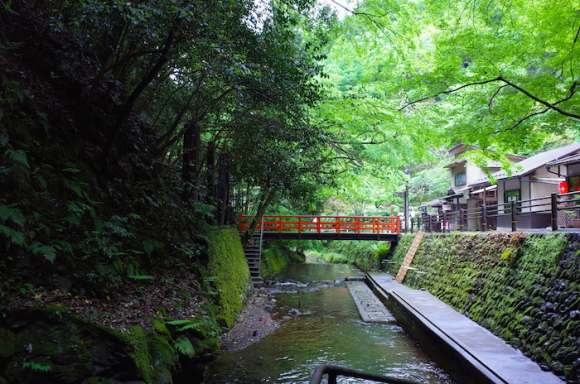
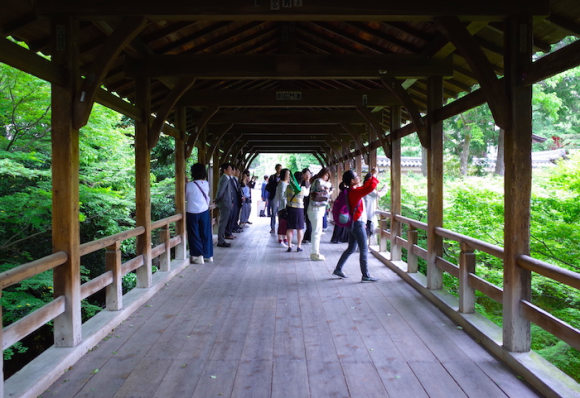

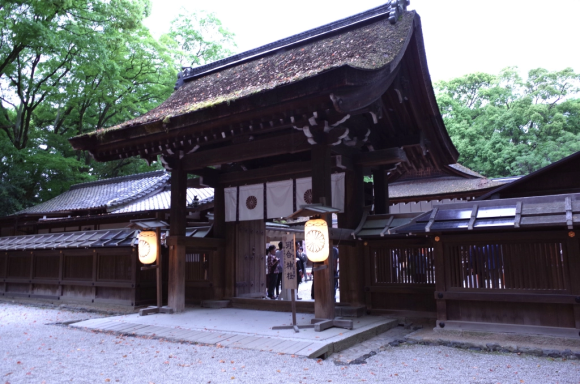
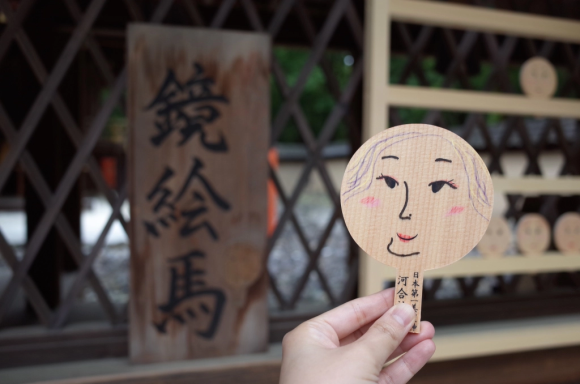

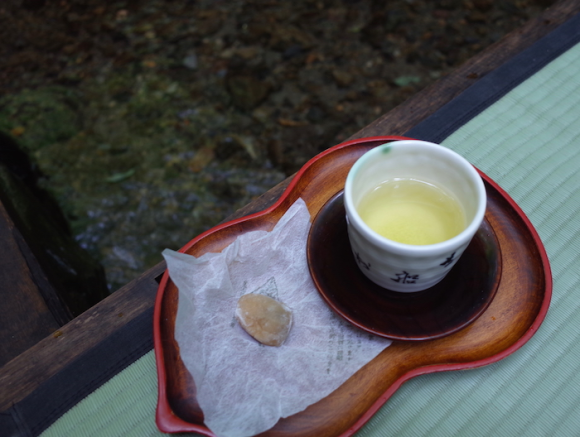


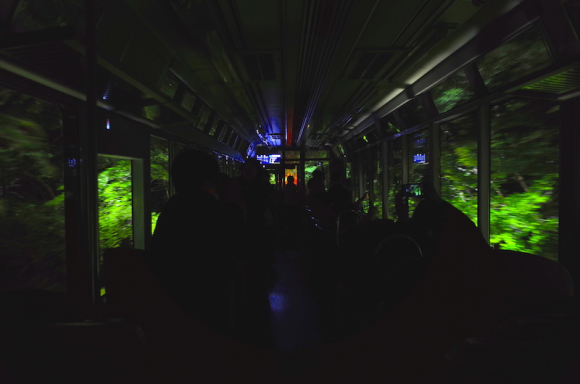
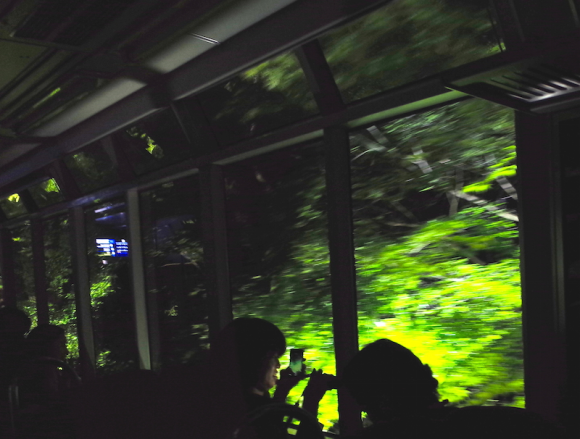
 Kyoto’s primeval forest to come to life in beautiful interactive light art display 【Video】
Kyoto’s primeval forest to come to life in beautiful interactive light art display 【Video】 When Kyoto snow falls, this mountain shrine becomes one of the most beautiful places in the city
When Kyoto snow falls, this mountain shrine becomes one of the most beautiful places in the city Heavy snowfall in Kyoto creates scenes of breathtaking beauty at tourist sites around the city
Heavy snowfall in Kyoto creates scenes of breathtaking beauty at tourist sites around the city Amazing pics from Kyoto/Nara “bullet tour” show no matter how tight your schedule, you should go
Amazing pics from Kyoto/Nara “bullet tour” show no matter how tight your schedule, you should go New Kyoto Starbucks has the beauty, historical pedigree to be a sightseeing attraction itself
New Kyoto Starbucks has the beauty, historical pedigree to be a sightseeing attraction itself Ramen restaurant’s English menu prices are nearly double its Japanese ones, denies discriminating
Ramen restaurant’s English menu prices are nearly double its Japanese ones, denies discriminating What makes a good boss in Japan? Workers sound off in survey
What makes a good boss in Japan? Workers sound off in survey The Purple Lucky Bag from Village Vanguard is an extra-large waste of money
The Purple Lucky Bag from Village Vanguard is an extra-large waste of money Japan super budget dining – What’s the best way to spend 1,000 yen at Family Mart?
Japan super budget dining – What’s the best way to spend 1,000 yen at Family Mart?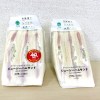 Japanese convenience store fools us with its 40-percent-more sandwich, but in a good way
Japanese convenience store fools us with its 40-percent-more sandwich, but in a good way Nearly one in ten young adults living in Japan isn’t ethnically Japanese, statistics show
Nearly one in ten young adults living in Japan isn’t ethnically Japanese, statistics show Married couples in Japan must have the same surname, so does Mr. Sato regret taking his wife’s?
Married couples in Japan must have the same surname, so does Mr. Sato regret taking his wife’s? The Ultimate Battle for Ham Sandwich Supremacy – we rank Japan’s convenience store sandwiches
The Ultimate Battle for Ham Sandwich Supremacy – we rank Japan’s convenience store sandwiches Collect ’em all! New Pokéfuta accessories now available at Village Vanguard
Collect ’em all! New Pokéfuta accessories now available at Village Vanguard Majority of Japanese men say they feel some discomfort seeing female janitors in men’s restrooms
Majority of Japanese men say they feel some discomfort seeing female janitors in men’s restrooms Starbucks Japan ready to get Year of the Horse started with adorable drinkware and plushies【Pics】
Starbucks Japan ready to get Year of the Horse started with adorable drinkware and plushies【Pics】 Japanese beef bowl chain Sukiya’s 2026 Smile Box lucky bag basically pays for itself
Japanese beef bowl chain Sukiya’s 2026 Smile Box lucky bag basically pays for itself Hayao Miyazaki says Happy New Year to Studio Ghibli fans with new art for Year of the Horse
Hayao Miyazaki says Happy New Year to Studio Ghibli fans with new art for Year of the Horse Cup Noodle tries an authentic Jiro-style ramen, but something’s not quite right
Cup Noodle tries an authentic Jiro-style ramen, but something’s not quite right The best Starbucks Japan Frappuccinos we want to drink again in 2026
The best Starbucks Japan Frappuccinos we want to drink again in 2026 We revisited Sweets Paradise after a decade to see if Japan’s dessert buffet still delivers
We revisited Sweets Paradise after a decade to see if Japan’s dessert buffet still delivers That time Seiji called JASRAC to ask why he didn’t get paid royalties for his song being on TV
That time Seiji called JASRAC to ask why he didn’t get paid royalties for his song being on TV We found possibly the quietest Japanese-style hotel in Tokyo’s bustling Shinjuku district
We found possibly the quietest Japanese-style hotel in Tokyo’s bustling Shinjuku district Pizza Hut Japan’s hot lucky bags are perfect for a New Year’s pizza party
Pizza Hut Japan’s hot lucky bags are perfect for a New Year’s pizza party Japan’s oldest largetooth sawfish in captivity back on display in Mie Prefecture
Japan’s oldest largetooth sawfish in captivity back on display in Mie Prefecture 7-Eleven Japan starts new temporary luggage storage service in over 300 branches
7-Eleven Japan starts new temporary luggage storage service in over 300 branches Disillusionment at Tsukiji’s tourist-target prices led us to a great ramen restaurant in Tokyo
Disillusionment at Tsukiji’s tourist-target prices led us to a great ramen restaurant in Tokyo Starbucks teams up with 166-year-old Kyoto doll maker for Year of the Horse decorations【Photos】
Starbucks teams up with 166-year-old Kyoto doll maker for Year of the Horse decorations【Photos】 Tokyo considering law requiring more trash cans following litter increase in heavily touristed area
Tokyo considering law requiring more trash cans following litter increase in heavily touristed area Tokyo’s Tsukiji sushi neighborhood asks tour groups to stay away for the rest of the month
Tokyo’s Tsukiji sushi neighborhood asks tour groups to stay away for the rest of the month Tokyo event lets you travel back in time, for free, to celebrate 100 years since Showa era start
Tokyo event lets you travel back in time, for free, to celebrate 100 years since Showa era start Japan may add Japanese language proficiency, lifestyle classes to permanent foreign resident requirements
Japan may add Japanese language proficiency, lifestyle classes to permanent foreign resident requirements Sanrio theme park in Japan announces plans to expand into a Sanrio resort
Sanrio theme park in Japan announces plans to expand into a Sanrio resort Stamina-destroying “Paralysis Noodles” are Tokyo’s newest over-the-top ramen innovation
Stamina-destroying “Paralysis Noodles” are Tokyo’s newest over-the-top ramen innovation Survey asks foreign tourists what bothered them in Japan, more than half gave same answer
Survey asks foreign tourists what bothered them in Japan, more than half gave same answer Japan’s human washing machines will go on sale to general public, demos to be held in Tokyo
Japan’s human washing machines will go on sale to general public, demos to be held in Tokyo Japan’s deadliest food claims more victims, but why do people keep eating it for New Year’s?
Japan’s deadliest food claims more victims, but why do people keep eating it for New Year’s? We deeply regret going into this tunnel on our walk in the mountains of Japan
We deeply regret going into this tunnel on our walk in the mountains of Japan Studio Ghibli releases Kodama forest spirits from Princess Mononoke to light up your home
Studio Ghibli releases Kodama forest spirits from Princess Mononoke to light up your home Major Japanese hotel chain says reservations via overseas booking sites may not be valid
Major Japanese hotel chain says reservations via overseas booking sites may not be valid Put sesame oil in your coffee? Japanese maker says it’s the best way to start your day【Taste test】
Put sesame oil in your coffee? Japanese maker says it’s the best way to start your day【Taste test】 No more using real katana for tourism activities, Japan’s National Police Agency says
No more using real katana for tourism activities, Japan’s National Police Agency says Starbucks Japan reveals new sakura drinkware collection, inspired by evening cherry blossoms
Starbucks Japan reveals new sakura drinkware collection, inspired by evening cherry blossoms Updated cherry blossom forecast shows extra-long sakura season for Japan this year
Updated cherry blossom forecast shows extra-long sakura season for Japan this year Temple-heavy Kyoto presenting a unique challenge for travelers looking for Muslim prayer rooms
Temple-heavy Kyoto presenting a unique challenge for travelers looking for Muslim prayer rooms The all-new Kyotrain, maybe Japan’s most Japanese train ever, will take you to Kyoto this spring
The all-new Kyotrain, maybe Japan’s most Japanese train ever, will take you to Kyoto this spring Kyoto in summer: A special trip to Kifune shrine recharges the soul
Kyoto in summer: A special trip to Kifune shrine recharges the soul Travel to Kyoto on the Kyotrain: A Japanese train with interiors like a traditional Kyoto house
Travel to Kyoto on the Kyotrain: A Japanese train with interiors like a traditional Kyoto house Kyoto creates new for-tourist buses to address overtourism with higher prices, faster rides
Kyoto creates new for-tourist buses to address overtourism with higher prices, faster rides A nearly 400-year-old Kyoto temple ordinarily closed to public is accepting visitors this summer
A nearly 400-year-old Kyoto temple ordinarily closed to public is accepting visitors this summer Japanese travelers are avoiding Kyoto as the city’s number of foreign visitors continues to grow
Japanese travelers are avoiding Kyoto as the city’s number of foreign visitors continues to grow No-bus Kyoto sightseeing! SoraNews24’s ultimate on-foot guide for Japan’s former capital【Part 4】
No-bus Kyoto sightseeing! SoraNews24’s ultimate on-foot guide for Japan’s former capital【Part 4】 Draw-your-own fox charms are one of the highlights of Kyoto’s famous Fushimi Inari Shrine
Draw-your-own fox charms are one of the highlights of Kyoto’s famous Fushimi Inari Shrine Beautiful flowers bloom just one day each at 500-year-old Kyoto temple, and they’re blossoming now
Beautiful flowers bloom just one day each at 500-year-old Kyoto temple, and they’re blossoming now Can’t spend a whole month at Kyoto’s Gion Festival? This beautiful video gives the highlights
Can’t spend a whole month at Kyoto’s Gion Festival? This beautiful video gives the highlights Getting off the beaten Kyoto temple path and onto a mossy one with the Kyoto Moss Tour Passport
Getting off the beaten Kyoto temple path and onto a mossy one with the Kyoto Moss Tour Passport Don’t have enough time to see Japan? You do now, with this amazing time-lapse video
Don’t have enough time to see Japan? You do now, with this amazing time-lapse video
Leave a Reply